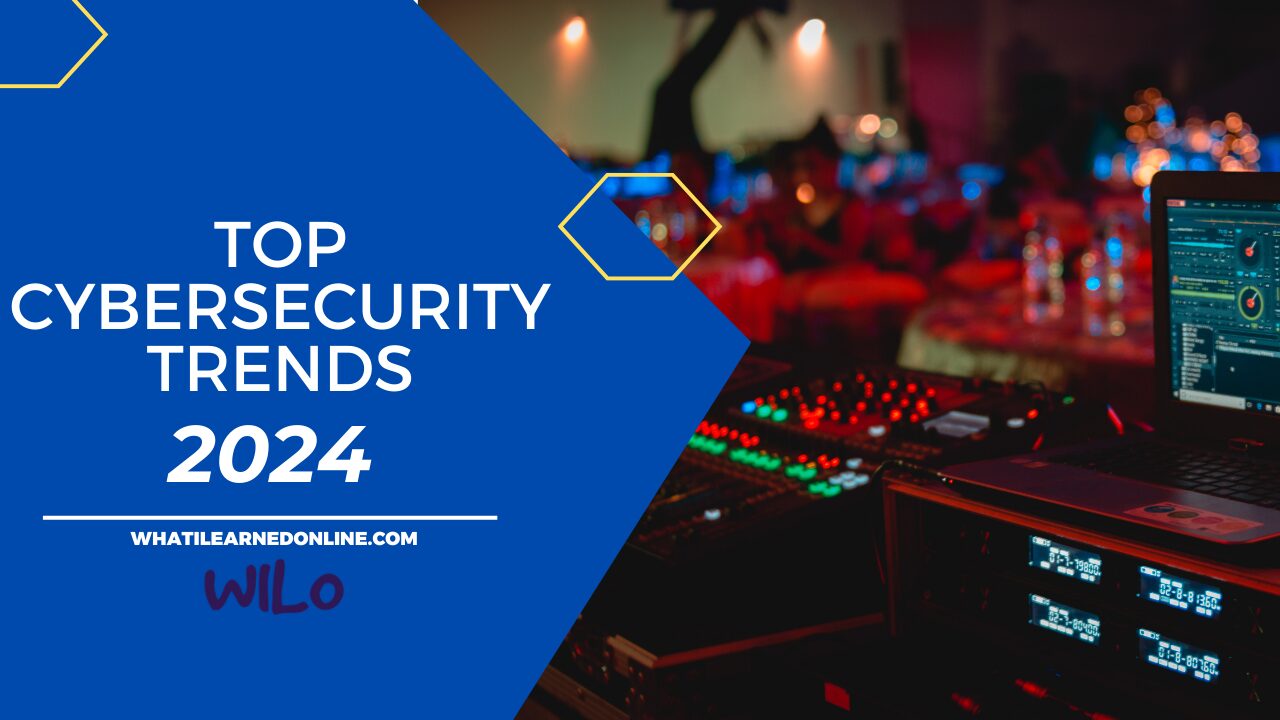
As technology continues to evolve at a breakneck pace, the cybersecurity landscape is undergoing a parallel transformation. The growing dependence on digital systems and interconnected devices has led to an unprecedented surge in cyber threats. In 2024, staying ahead of the curve demands a deep understanding of emerging trends and proactive measures to safeguard digital assets. Below, we delve into the top cybersecurity trends shaping the industry this year.
1. Artificial Intelligence (AI) in Cyber Defense
Artificial intelligence is no longer a futuristic concept; it is now at the forefront of cybersecurity. AI-powered systems are transforming the way organizations identify, analyze, and mitigate threats. These tools can process vast amounts of data in real time, detecting unusual patterns and anomalies that might signal a cyberattack. For example, AI-driven platforms can monitor network traffic and flag suspicious behavior, such as unauthorized access attempts or data exfiltration.
Moreover, machine learning algorithms continuously improve as they process more data, enabling predictive analytics that anticipates potential vulnerabilities before they can be exploited. This capability is invaluable in combating advanced persistent threats (APTs) and zero-day attacks. Despite these advantages, the integration of AI also poses challenges. Cybercriminals are leveraging the same technology to develop sophisticated malware and conduct automated phishing campaigns, leading to an AI-driven arms race in cybersecurity.
2. Rise of Zero Trust Security Models
The concept of a Zero Trust security model is becoming a cornerstone of organizational cybersecurity strategies. Unlike traditional perimeter-based security, which assumes that everything inside the network is trustworthy, Zero Trust operates on the principle of “never trust, always verify.” This model ensures that every user, device, and application undergoes strict verification before gaining access to resources.
The rise of remote work and cloud adoption has accelerated the need for Zero Trust frameworks. Employees accessing company networks from various locations and devices introduce vulnerabilities that traditional security measures struggle to address. Organizations are implementing multi-factor authentication (MFA), identity verification protocols, and real-time monitoring to mitigate risks. For instance, companies like Google have adopted Zero Trust principles through their BeyondCorp initiative, which prioritizes secure access for a distributed workforce.
3. Social Engineering Attacks on the Rise
Social engineering attacks, which exploit human psychology rather than technological vulnerabilities, are becoming increasingly sophisticated. Phishing remains the most prevalent form, but new variations like smishing (SMS phishing) and vishing (voice phishing) are gaining traction. Cybercriminals craft convincing messages to deceive individuals into revealing sensitive information or downloading malicious software.
The financial and reputational damage caused by social engineering attacks is staggering. For instance, in 2023, businesses lost billions to phishing scams alone. To combat this, organizations are ramping up employee awareness programs and deploying email filtering tools powered by AI to detect suspicious messages. However, the human element remains the weakest link in cybersecurity, emphasizing the need for continuous education and vigilance.
4. Securing Internet of Things (IoT) Devices
The proliferation of IoT devices—from smart thermostats to industrial sensors—has introduced new attack surfaces for cybercriminals. These devices often have weak security protocols, making them easy targets. A compromised IoT device can serve as a gateway for attackers to infiltrate larger networks, leading to devastating consequences.
To address this, manufacturers and businesses are adopting best practices such as secure firmware updates, strong password policies, and encrypted communications. Additionally, frameworks like IoT Security Maturity Model (SMM) help organizations assess and improve their IoT security posture. In critical sectors like healthcare and manufacturing, where IoT devices play a pivotal role, ensuring robust security is non-negotiable.
5. Strengthening Cloud Security
Cloud computing has revolutionized how businesses operate, offering scalability, cost-efficiency, and remote accessibility. However, the shift to the cloud has also introduced unique security challenges. Misconfigured cloud storage, inadequate access controls, and shared responsibility gaps are some of the vulnerabilities that attackers exploit.
To mitigate these risks, organizations are implementing cloud-native security solutions, such as Cloud Access Security Brokers (CASBs) and identity and access management (IAM) systems. Regular audits, data encryption, and compliance with industry standards like GDPR and HIPAA are essential components of a robust cloud security strategy. As businesses continue to migrate critical workloads to the cloud, prioritizing security in this domain is imperative.
6. Addressing Automotive Cybersecurity
The automotive industry is undergoing a digital transformation with the rise of connected and autonomous vehicles. While these advancements enhance convenience and safety, they also introduce new cybersecurity challenges. Cyberattacks targeting vehicle control systems, GPS modules, and infotainment systems can compromise passenger safety and privacy.
To counter these threats, automakers are investing in secure software development practices and collaboration with cybersecurity firms. The adoption of vehicle-to-everything (V2X) communication protocols and secure over-the-air (OTA) updates are critical steps toward ensuring automotive cybersecurity. Regulatory frameworks, such as UNECE WP.29, mandate cybersecurity measures for vehicles, pushing manufacturers to prioritize this area.
7. Quantum-Resistant Cryptography
Quantum computing holds immense potential but also poses a significant threat to traditional cryptographic algorithms. Encryption methods like RSA and ECC, which underpin modern security protocols, could become obsolete as quantum computers achieve higher computational power. This development necessitates the transition to quantum-resistant cryptographic algorithms.
Organizations are beginning to explore and adopt quantum-safe encryption standards recommended by entities like the National Institute of Standards and Technology (NIST). Investing in quantum-resistant cryptography now can help future-proof sensitive data against the quantum era’s looming challenges.
8. Advanced Threat Monitoring with Real-Time Data
The ability to detect and respond to threats in real time is a game-changer for cybersecurity. Advanced threat monitoring systems leverage AI, machine learning, and big data analytics to provide actionable insights. These systems can identify anomalies, track threat actors, and trigger automated responses to mitigate potential breaches.
For example, Security Information and Event Management (SIEM) solutions and Extended Detection and Response (XDR) platforms offer comprehensive visibility into network activities. These tools empower security teams to stay one step ahead of cybercriminals, minimizing damage and downtime during attacks.
9. Cyber Insurance Growth
Cyber insurance is emerging as a critical component of risk management for businesses. With the rising frequency and cost of cyber incidents, organizations are turning to insurance policies that cover financial losses, legal liabilities, and recovery expenses. Customized policies tailored to specific industries and threat landscapes are gaining popularity.
Insurers are also offering value-added services, such as incident response support and risk assessments, to help clients strengthen their cybersecurity posture. While cyber insurance cannot replace robust security practices, it provides a safety net that mitigates financial risks.
10. Workforce Development in Cybersecurity
The global shortage of skilled cybersecurity professionals continues to be a pressing issue. Addressing this gap requires a multi-faceted approach, including enhanced training programs, industry certifications, and partnerships between academic institutions and businesses. Initiatives like the Cybersecurity Talent Initiative aim to attract and retain talent in this critical field.
Investing in workforce development not only strengthens organizational security but also drives innovation in the cybersecurity industry. By equipping professionals with the skills needed to tackle emerging threats, we can build a more secure digital future.
Conclusion
The cybersecurity trends of 2024 highlight the dynamic and ever-changing nature of this field. From leveraging AI for enhanced defense to addressing the challenges posed by IoT and quantum computing, staying informed is essential for individuals and organizations alike. By adopting proactive measures and embracing emerging technologies, we can navigate the complexities of the cybersecurity landscape and safeguard our digital assets.

